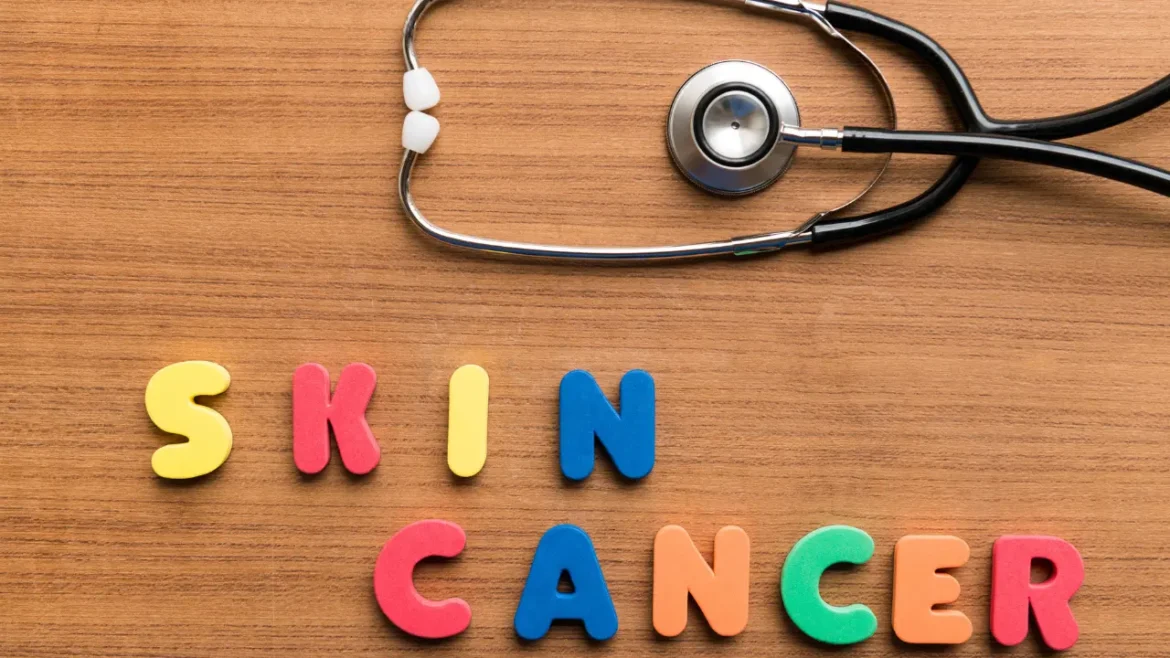Description
The unchecked proliferation of aberrant skin cells defines skin cancer as a malignant illness. This happens when genetic changes in skin cells result in their accelerated cell division and formation of tumors. Long-term exposure to ultraviolet (UV) rays from the sun alongside artificial sources such as tanning beds causes cumulative damage to the skin’s cells, which is the main cause of skin cancer. The following include the three primary forms of skin cancer.
Basal Cell Carcinoma (BCC)
About 80% of all occurrences of skin cancer are basal cell carcinoma, making it the most prevalent kind. It often develops on exposed parts of your body like the face, hands, and neck. BCC typically manifests as a slowly expanding, raised, pearly lump on your skin. It is frequently encircled by tiny blood veins and might possess a depression in the center or ulceration. BCC seldom spreads to other body regions but, if handled, can result in localized devastation.
Squamous Cell Carcinoma (SCC)
An estimated 20% of occurrences of skin cancer are squamous cell carcinoma. Nonetheless, it can also form in other places, including scars, burns, or open sores. It typically appears in sun-exposed locations. SCC appears as open sores with crusting or bleeding, or as scaly, pink, or red patches. The patches may be wart-like or rough on the outside, and they can occasionally turn into elevated, firm nodules. Compared to BCC, SCC is more likely than BCC to spread to surrounding lymph nodes or different organs — however, the possibility is still rather low.
Melanoma
Melanoma constitutes the rarest and most dangerous kind of skin cancer. It originates from the skin’s pigment-making cells called melanocytes. Any portion of the body, like those that have no exposure to the sun, might acquire melanoma. It frequently presents as an unusual mole or tanned lesion. The primary features of melanoma are irregular borders, a broad range of hues, including shades of black, brown, blue, white, or red, a greater diameter frequently reaching 6 millimeters and variations in dimension, form, or elevation across time. Early identification and treatment are essential for positive outcomes because melanoma has a strong propensity to spread to neighboring lymph nodes along with other organs.
Although these are among the most prevalent types of skin cancer, it is essential to keep in mind that there are different ones, less typical subtypes as well, like dermatofibrosarcoma protuberans, cutaneous lymphoma, and Merkel cell carcinoma. These subgroups have unique traits and methods of therapy.
You May Also Like:
HOO RAA CBD VS PARTNERED PROCESS CBD
SMILZ CBD GUMMIES VS PARTNERED PROCESS CBD GUMMIES
Skin cancer: Description, Causes, And Treatment Protocol is an original (HealthXWire) article.
Possible Causes
UV light exposure is the main factor in the development of skin cancer. Other risk factors involve possessing fair skin, having a history of sunburns, having skin cancer in the family, having a weaker immune system, being exposed to particular radiation or chemicals, and having skin cancer oneself or in the family.
Exacerbating Factors
Intense Sun Exposure
Skin cancer is significantly exacerbated by prolonged and strong exposition to ultraviolet (UV) light from the sun. Overexposure to the sun’s rays, particularly from 10 a.m. to 4 p.m. when they are at their greatest, raises the probability of skin cancer.
Beds and Lamps for Tanning
Another aggravating issue is the use of UV-emitting lamps and tanning beds. Even stronger than sunshine, the UV radiation produced by tanning beds can cause greater skin damage and raise the likelihood of skin cancer.
Frequent Sunburns
UV-induced skin damage is clearly indicated by sunburns. Multiple sunburns during one’s life greatly raise the risk of contracting skin cancer, particularly the more dangerous melanoma type.
Fair Skin
Compared to people having darker skin tones, people with pale skin have less built-in protection from UV radiation. Fair skin has lower levels of melanin, which provides less protection from UV rays and makes it more susceptible to skin cancer.
Skin Cancer History
People who have had skin malignancies like squamous cell carcinoma (SCC), basal cell carcinoma (BCC), or melanoma in the past are more likely to get them again in the future.
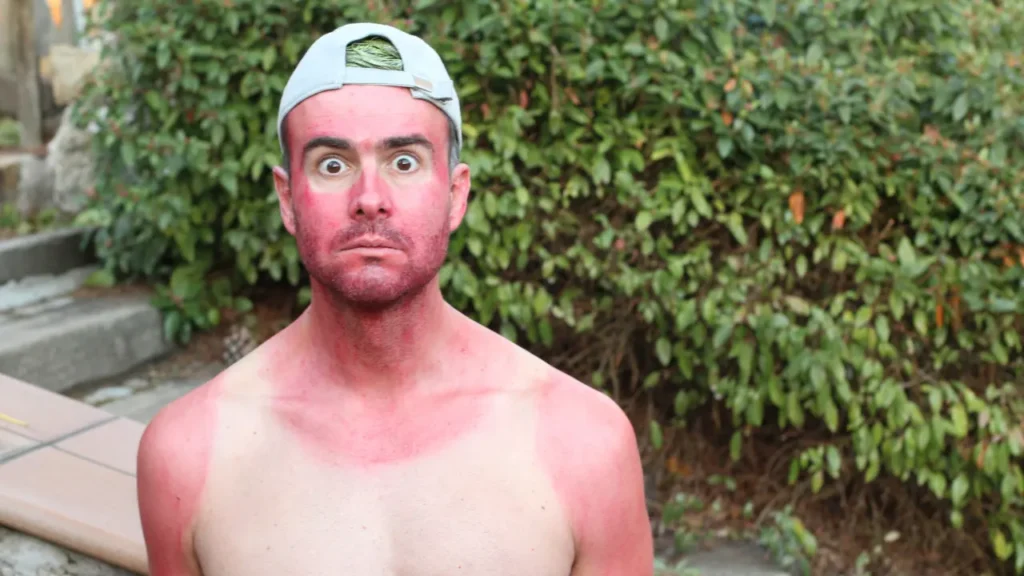
Mitigating Factors
Sun Protection Measures
Effective sun protection practices can reduce the likelihood of getting skin cancer. Such actions consist of:
Applying Sunscreen
It is essential to consistently use broad-spectrum sunscreens containing an elevated sun protection factor (SPF). You should apply sunscreen liberally on all exposed skin regions and reapply every two hours or more, especially when swimming or perspiring.
Wearing Protective Clothing
Wearing skin-covering apparel, including long sleeves, long pants, and hats with broad brims, can further shield people from UV rays.
Using Sunglasses
The eyes along with the sensitive skin around them are protected from UV radiation by wearing sunglasses containing UV protection.
Seeking Shade
Reduced UV exposure and a decreased chance of skin damage may be achieved by seeking shade, particularly during the strongest sun hours.
Staying Away from Tanning Lamps and Beds
Skin cancer risk might be considerably lowered by refraining entirely from using tanning beds and lamps. People may get tan appearances without damaging UV exposure by choosing safer alternatives like self-tanning creams or spray tans.
Regular Skin Examinations
Early skin cancer detection can be aided by routine skin self-examinations and expert dermatological screenings. Early detection enables prompt intervention and enhances the effectiveness of treatment.
Educating and Increasing Awareness
The prevalence of skin cancer might be reduced in a community by raising knowledge of the risks associated with overexposure to ultraviolet (UV) rays, the necessity of sunblock, and the dangers of tanning bed usage.
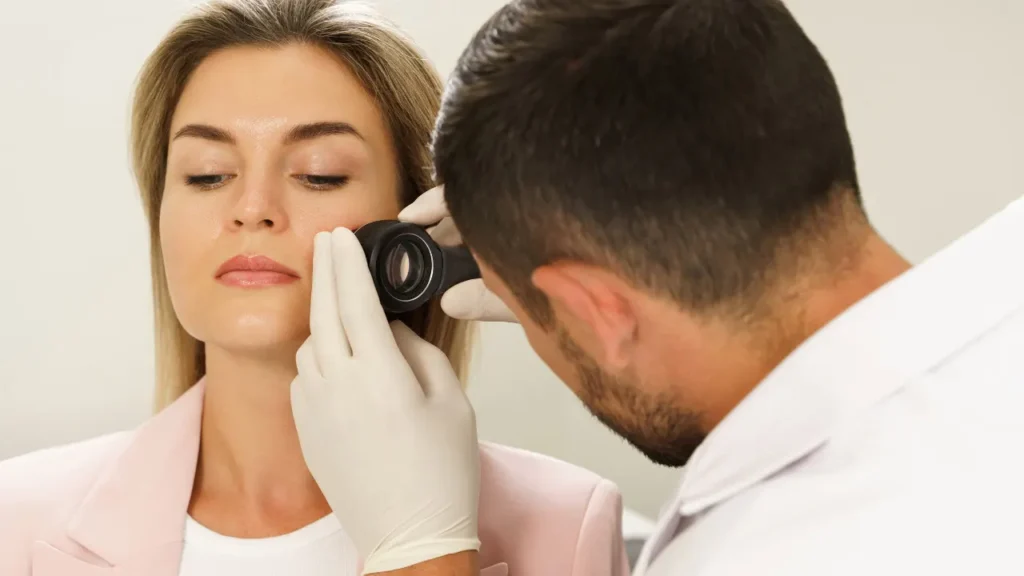

Standard Treatment Protocols
The type, phase, and site of the skin cancer all influence the therapy option. The main objective of treatment is to eradicate or eradicate cancer cells while protecting healthy tissue. The usual skin cancer therapy regimens are listed below.
Surgical Excision
The malignant lesion and a border of surrounding healthy skin are surgically removed during this treatment. It is frequently applied to treat squamous cell carcinoma (SCC) along with basal cell carcinoma (BCC).
Mohs Surgery
Thin layers of malignant tissue are removed one at a time using the specialist procedure known as Mohs surgery. Until no cancer cells are found, each layer gets inspected under a microscope. Regarding SCC or BCC, this technique is frequently employed in delicate tissue-preserved regions like the face.
Curettage and Electrodessication
A curette is used to remove the malignant tissue from the skin’s surface in this treatment, and any cancer cells that are still present are then cauterized using an electric needle. When treating superficial SCC or BCC, it is frequently employed.
Cryotherapy
The cancer cells are killed during cryotherapy by freezing them with liquid nitrogen. Skin malignancies or precancerous lesions that are tiny and in the early stages can be treated using this technique.
Chemotherapy
Chemotherapy medications are sometimes prescribed for the treatment of advanced skin cancer which has begun to spread to different body regions. Cancer cells across the body are targeted by systemic chemotherapy, which is given orally or intravenously.
Radiation Therapy
X-rays with high energy or other types of radiation are used in radiation treatment to kill cancerous cells. This is generally used in instances when surgery is not an option or for the treatment of advanced or persistent skin cancer.
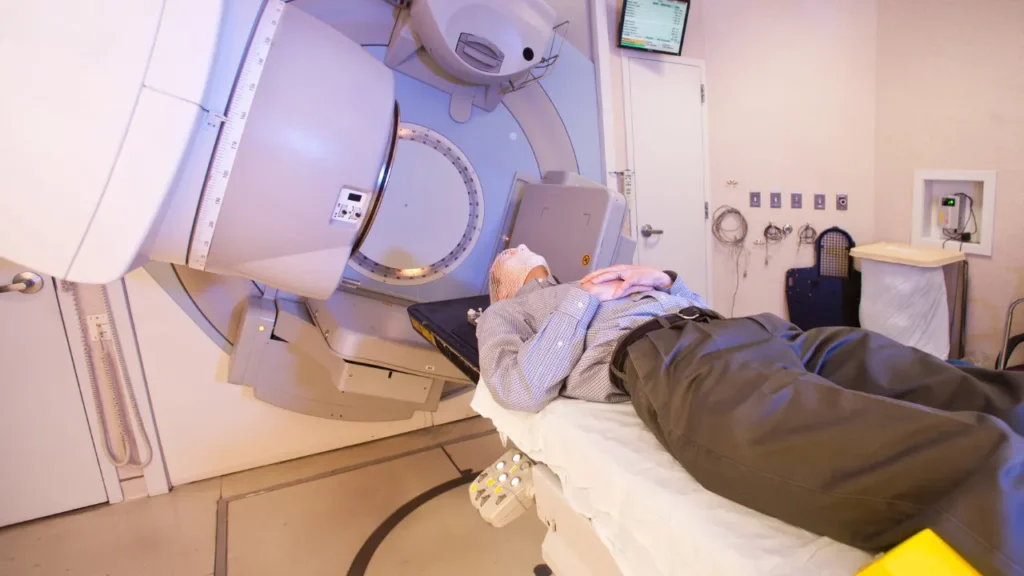

Treatment Options
Many different forms of treatment have been developed for skin cancer along with the above-mentioned basic regimens. According to the cancer’s nature and stage, different options may be available. A few frequent methods of treatment include the following.
Topical Medications
Ingenol mebutate, imiquimod, fluorouracil, or diclofenac represent a few examples of prescription drugs that might be applied topically on the impacted region. These drugs are frequently utilized for superficial skin malignancies or precancerous lesions because they target and destroy aberrant skin cells.
Targeted Therapy
Medications commonly referred to as targeted therapies target chemicals or signaling networks that have a role in the development of cancer cells. Advanced melanoma patients may get targeted therapy such as immune checkpoint inhibitors or BRAF inhibitors.
Photodynamic Therapy (PDT)
An agent that photosensitizes the skin is applied during PDT, which is immediately followed by exposing a patient to a particular wavelength of light. Cancer cells are destroyed as a result of the agent being triggered by light. PDT is employed for superficial SCC or BCC.
Immunotherapy
Drugs used in immunotherapy aid the immune system’s recognition and destruction of cancer cells. These medications, which are occasionally employed in conjunction with other treatments, may prove beneficial for treating metastatic melanoma.
Palliative Care
Palliative care is used to treat skin cancer that has propagated to other organs or proves severe. It focuses on symptom management and enhancing the standard of life. This might include counseling, supportive therapies, and pain management.
However, it is crucial to remember that you should talk about your treatment options with medical professionals who will take your unique features into account and modify your treatment plans as necessary. The category, stage, and position of the cancer, your general health and preferences, along with other considerations, all influence the treatment option.
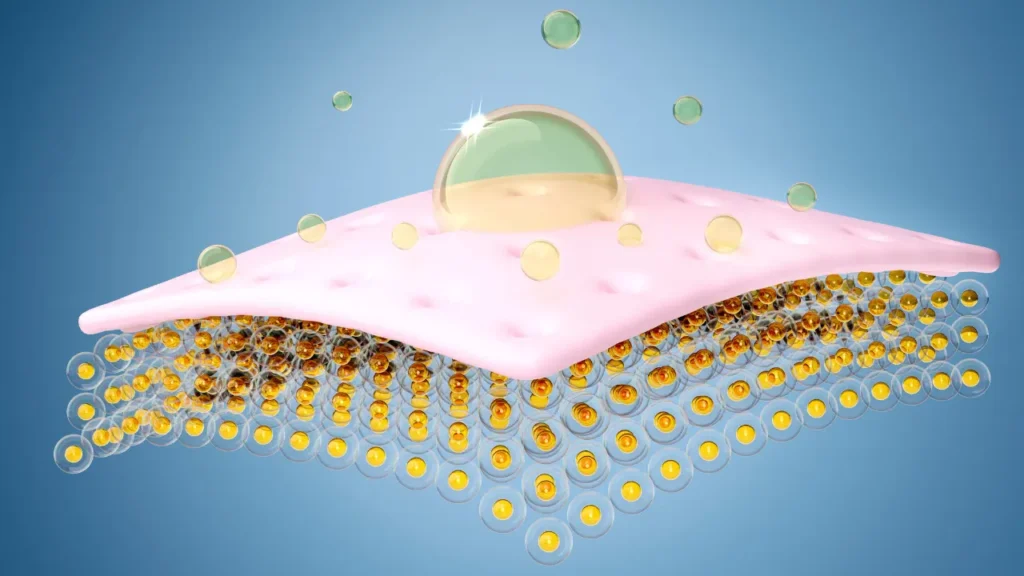

Conclusion
Even though the most common forms of skin cancer are not fatal and do not require intense treatment, this does not mean you should neglect your skin health. Pay close attention to any wounds that do not heal and moles or growths that continue to expand. Sun protection is key, so regular SPF application and avoiding excessive exposure to UV rays can significantly decrease your chance of developing skin cancer. Those who do have skin cancer should see their treatment through, as BCC and SCC have high recovery rates, and catching melanoma early enough can yield a high recovery rate as well.
Do not attempt to resolve skin cancer on your own. Always consult a doctor to determine the best course of treatment. One of the easiest ways to stay healthy during treatment for skin cancer is to maintain a nutritious diet full of well-balanced meals. Taking these advisements into account will allow you to enjoy any sun exposure safely and reduce your chance of developing adverse effects from UV rays.
Additional resources for further reference
https://www.cancer.gov/types/skin
https://www.aad.org/public/diseases/skin-cancer/types/common
https://www.cdc.gov/cancer/skin/basic_info/index.htm
Important Note: The information contained in this article is for general informational purposes only, and should not be construed as health or medical advice, nor is it intended to diagnose, prevent, treat, or cure any disease or health condition. Before embarking on any diet, fitness regimen, or program of nutritional supplementation, it is advisable to consult your healthcare professional in order to determine its safety and probable efficacy in terms of your individual state of health.
Regarding Nutritional Supplements Or Other Non-Prescription Health Products: If any nutritional supplements or other non-prescription health products are mentioned in the foregoing article, any claims or statements made about them have not been evaluated by the U.S. Food and Drug Administration, and such nutritional supplements or other health products are not intended to diagnose, treat, cure, or prevent any disease.
Table of Contents

